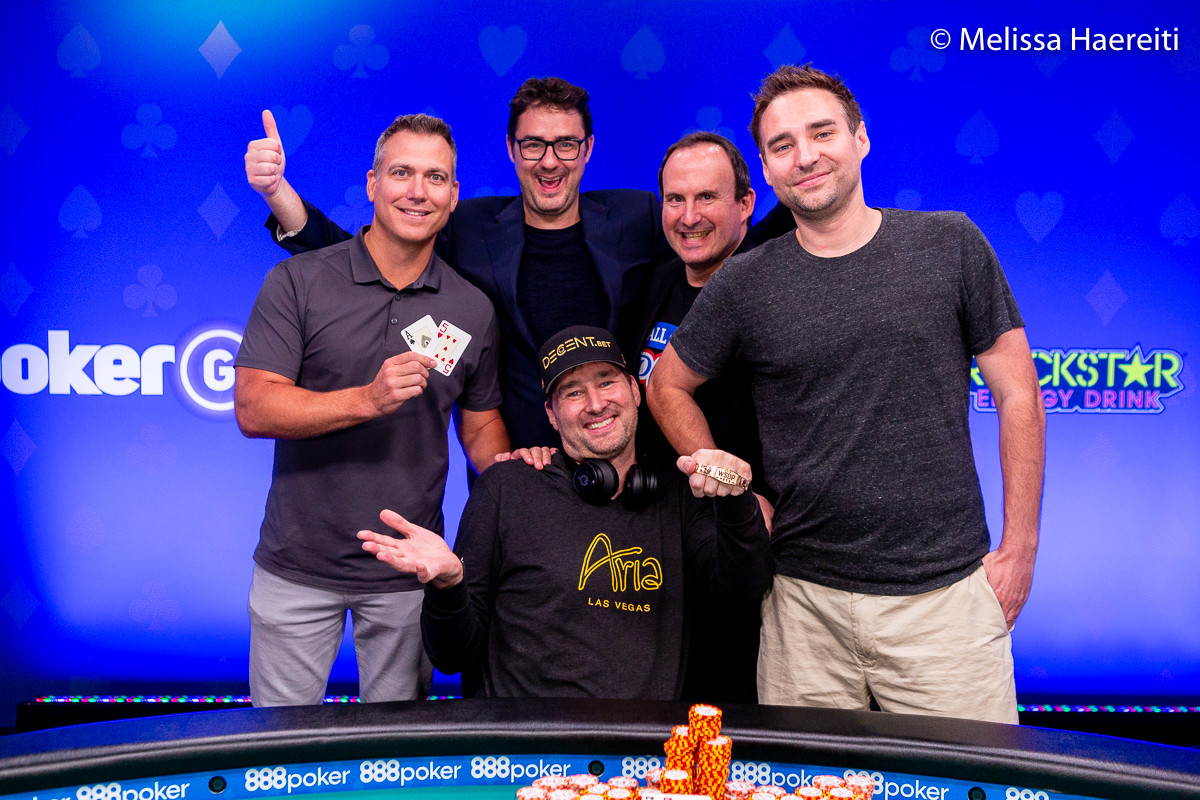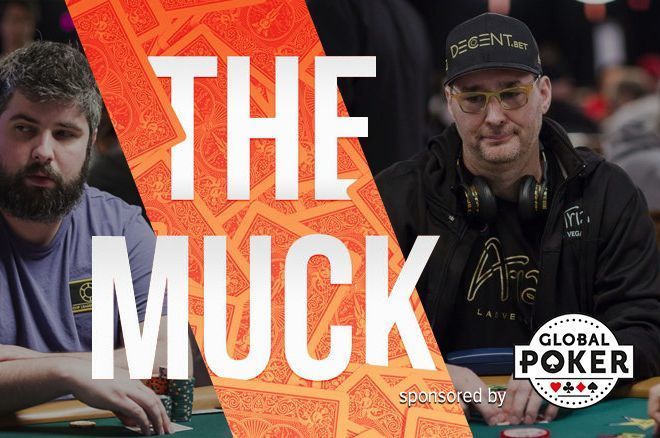
The Course: Serious Hold ‘Em Strategy For Smart Players. By Ed Miller. The Course by Ed Miller is a practical and useful, step-by-step guide to winning consistently at Texas No-Limit Holdem. It focuses on the most important poker concepts that determine who wins and who doesn’t. Unlike other books on poker, this one is very practical. On October 4, 2012, Hellmuth won his 13th World Series of Poker bracelet in the €10,450 WSOPE No Limit Hold'em Main Event, earning €1,022,376 ($1,333,841) and becoming the first player to ever win both the WSOP and WSOPE Main Events.
In the poker game of Texas hold 'em, a starting hand consists of two hole cards, which belong solely to the player and remain hidden from the other players. Five community cards are also dealt into play. Betting begins before any of the community cards are exposed, and continues throughout the hand. The player's 'playing hand', which will be compared against that of each competing player, is the best 5-card poker hand available from his two hole cards and the five community cards. Unless otherwise specified, here the term hand applies to the player's two hole cards, or starting hand.
- 2Limit hand rankings
Essentials[edit]
There are 1326 distinct possible combinations of two hole cards from a standard 52-card deck in hold 'em, but since suits have no relative value in this poker variant, many of these hands are identical in value before the flop. For example, A♥J♥ and A♠J♠ are identical in value, because each is a hand consisting of an ace and a jack of the same suit.
Therefore, there are 169 non-equivalent starting hands in hold 'em, which is the sum total of : 13 pocket pairs, 13 × 12 / 2 = 78 suited hands and 78 unsuited hands (13 + 78 + 78 = 169).
These 169 hands are not equally likely. Hold 'em hands are sometimes classified as having one of three 'shapes':
- Pairs, (or 'pocket pairs'), which consist of two cards of the same rank (e.g. 9♠9♣). One hand in 17 will be a pair, each occurring with individual probability 1/221 (P(pair) = 3/51 = 1/17).
An alternative means of making this calculation
First Step As confirmed above.
There are 2652 possible combination of opening hand.
Second Step
There are 6 different combos of each pair. 9h9c, 9h9s, 9h9d, 9c9s, 9c9d, 9d9s
To calculate the odds of being dealt a pair
2652 (possible opening hands) divided by 12 (the number of any particular pair being dealt. As above)
2652/12 = 221
- Suited hands, which contain two cards of the same suit (e.g. A♣6♣). Four hands out of 17 will be suited, and each suited configuration occurs with probability 2/663 (P(suited) = 12/51 = 4/17).
- Offsuit hands, which contain two cards of a different suit and rank (e.g. K♠J♥). Twelve out of 17 hands will be nonpair, offsuit hands, each of which occurs with probability 2/221 (P(offsuit non-pair) = 3*(13-1)/51 = 12/17).

It is typical to abbreviate suited hands in hold 'em by affixing an 's' to the hand, as well as to abbreviate non-suited hands with an 'o' (for offsuit). That is,
- QQ represents any pair of queens,
- KQ represents any king and queen,
- AKo represents any ace and king of different suits, and
- JTs represents any jack and ten of the same suit.
There are 25 starting hands with a probability of winning at a 10-handed table of greater than 1/7.[1]
Limit hand rankings[edit]
Some notable theorists and players have created systems to rank the value of starting hands in limit Texas hold'em. These rankings do not apply to no limit play.
Sklansky hand groups[edit]
David Sklansky and Mason Malmuth[2] assigned in 1999 each hand to a group, and proposed all hands in the group could normally be played similarly. Stronger starting hands are identified by a lower number. Hands without a number are the weakest starting hands. As a general rule, books on Texas hold'em present hand strengths starting with the assumption of a nine or ten person table. The table below illustrates the concept:
Chen formula[edit]
The 'Chen Formula' is a way to compute the 'power ratings' of starting hands that was originally developed by Bill Chen.[3]
- Highest Card
- Based on the highest card, assign points as follows:
- Ace = 10 points, K = 8 points, Q = 7 points, J = 6 points.
- 10 through 2, half of face value (10 = 5 points, 9 = 4.5 points, etc.)
- Pairs
- For pairs, multiply the points by 2 (AA=20, KK=16, etc.), with a minimum of 5 points for any pair. 55 is given an extra point (i.e., 6).
- Suited
- Add 2 points for suited cards.
- Closeness
- Subtract 1 point for 1 gappers (AQ, J9)
- 2 points for 2 gappers (J8, AJ).
- 4 points for 3 gappers (J7, 73).
- 5 points for larger gappers, including A2 A3 A4
- Add an extra point if connected or 1-gap and your highest card is lower than Q (since you then can make all higher straights)
Phil Hellmuth's: 'Play Poker Like the Pros'[edit]
Phil Hellmuth's 'Play Poker Like the Pros' book published in 2003.
| Tier | Hands | Category |
|---|---|---|
| 1 | AA, KK, AKs, QQ, AK | Top 12 Hands |
| 2 | JJ, TT, 99 | |
| 3 | 88, 77, AQs, AQ | |
| 4 | 66, 55, 44, 33, 22, AJs, ATs, A9s, A8s | Majority Play Hands |
| 5 | A7s, A6s, A5s, A4s, A3s, A2s, KQs, KQ | |
| 6 | QJs, JTs, T9s, 98s, 87s, 76s, 65s | Suited Connectors |
Statistics based on real online play[edit]
Statistics based on real play with their associated actual value in real bets.[4]
| Tier | Hands | Expected Value |
|---|---|---|
| 1 | AA, KK, QQ, JJ, AKs | 2.32 - 0.78 |
| 2 | AQs, TT, AK, AJs, KQs, 99 | 0.59 - 0.38 |
| 3 | ATs, AQ, KJs, 88, KTs, QJs | 0.32 - 0.20 |
| 4 | A9s, AJ, QTs, KQ, 77, JTs | 0.19 - 0.15 |
| 5 | A8s, K9s, AT, A5s, A7s | 0.10 - 0.08 |
| 6 | KJ, 66, T9s, A4s, Q9s | 0.08 - 0.05 |
| 7 | J9s, QJ, A6s, 55, A3s, K8s, KT | 0.04 - 0.01 |
| 8 | 98s, T8s, K7s, A2s | 0.00 |
| 9 | 87s, QT, Q8s, 44, A9, J8s, 76s, JT | (-) 0.02 - 0.03 |
Nicknames for starting hands[edit]
In poker communities, it is common for hole cards to be given nicknames. While most combinations have a nickname, stronger handed nicknames are generally more recognized, the most notable probably being the 'Big Slick' - Ace and King of the same suit, although an Ace-King of any suit combination is less occasionally referred to as an Anna Kournikova, derived from the initials AK and because it 'looks really good but rarely wins.'[5][6] Hands can be named according to their shapes (e.g., paired aces look like 'rockets', paired jacks look like 'fish hooks'); a historic event (e.g., A's and 8's - dead man's hand, representing the hand held by Wild Bill Hickok when he was fatally shot in the back by Jack McCall in 1876); many other reasons like animal names, alliteration and rhyming are also used in nicknames.
Notes[edit]
- ^No-Limit Texas Hold'em by Angel Largay
- ^David Sklansky and Mason Malmuth (1999). Hold 'em Poker for Advanced Players. Two Plus Two Publications. ISBN1-880685-22-1
- ^Hold'em Excellence: From Beginner to Winner by Lou Krieger, Chapter 5, pages 39 - 43, Second Edition
- ^http://www.pokerroom.com/poker/poker-school/ev-stats/total-stats-by-card/
- ^Aspden, Peter (2007-05-19). 'FT Weekend Magazine - Non-fiction: Stakes and chips Las Vegas and the internet have helped poker become the biggest game in town'. Financial Times. Retrieved 2010-01-10.
- ^Martain, Tim (2007-07-15). 'A little luck helps out'. Sunday Tasmanian. Retrieved 2010-01-10.
The popular show High Stakes Poker debuted in early 2006, with the first season lasting 13 episodes. Throughout the show's run, episodes were culled from multi-day sessions, so often the same players would be sitting around the table from week to week, although new players were frequently rotated in to change the makeup of the game.
Years later the shows remain highly entertaining, and can even be educational. For new poker players they introduce the game while illustrating many strategic concepts, while those with experience can watch and recognize how certain strategies have evolved over the years since the shows aired.
We're continuing our look back at Season 1, this time reviewing Episode 10. This episode marks the first appearance of a couple of familiar players making their first appearances on the show — Antonio Esfandiari and Phil Hellmuth.
Esfandiari immediately gets involved by raising preflop with , then he promptly flops one pair and turns a second. Then Hellmuth opens and ends up losing a big quads-versus-full-house pot versus Barry Greenstein.
Things don't go well for Hellmuth after that, either, with clashes against Freddy Deeb and Barry Greenstein result in him losing his entire starting stack, forcing him to rebuy. Meanwhile Daniel Negreanu's first-season woes continue in this episode as he finds himself on the wrong side of multiple big hands. And Esfandiari runs into some difficulty with pocket aces right at the end, too.
In fact, pocket aces turn up several times in this episode, leading to a few interesting (and big) hands. Take a look below.
High Stakes Poker: Season 1, Episode 10
| Originally aired: | March 20, 2006 |
| Location: | Golden Nugget, Las Vegas |
| Players: | Doyle Brunson, Freddy Deeb, Eli Elezra, Antonio Esfandiari, Barry Greenstein, Phil Hellmuth, Daniel Negreanu, Shawn Sheikhan |
| Commentators: | A.J. Benza, Gabe Kaplan |
| Game: | no-limit hold'em cash game, minimum $100,000 buy-in |
| Stakes: | blinds $300/$600, ante $100 |
Terms and Concepts
- equity — in the first hand Deeb flops a flush draw and turns a pair, giving him enough 'equity' to call postflop bets by Greenstein — 2:00 mark
- steaming — as noted, things do not start well for Hellmuth, and he begins 'steaming' in a hand versus Deeb — 16:00 mark
- loose — after an oversized preflop reraise by Greenstein in a multi-way hand, Negreanu has queen-jack suited and makes a 'loose' call (not the only time he does so this episode) — 21:00 mark
Phil Hellmuth Youtube
Big Hand Alerts
Low Limit Holdem Strategy
- Doyle Brunson and Negreanu play a $184,900 pot in which one of them calls an all-in on the turn while drawing dead — 26:30 mark
- Negreanu and Deeb play a big one as well, getting all in on the flop in what turns out to be a $241,300 pot (that they run twice) — 35:30 mark
- a three-way all-in involving Esfandiari, Hellmuth, and Eli Elezra concludes the episode, creating a $212,800 pot — 38:30 mark
Be sure to complete your PokerNews experience by checking out an overview of our mobile and tablet apps here. Stay on top of the poker world from your phone with our mobile iOS and Android app, or fire up our iPad app on your tablet. You can also update your own chip counts from poker tournaments around the world with MyStack on both Android and iOS.
Phil Hellmuth Bad Beats
Tags
cash game strategyno-limit hold’emaggressionequitytable talkHigh Stakes PokerDoyle BrunsonFreddy DeebEli ElezraAntonio EsfandiariBarry GreensteinPhil HellmuthDaniel NegreanuShawn SheikhanRelated Players
Daniel NegreanuBarry GreensteinPhil HellmuthDoyle BrunsonFreddy DeebEli Elezra